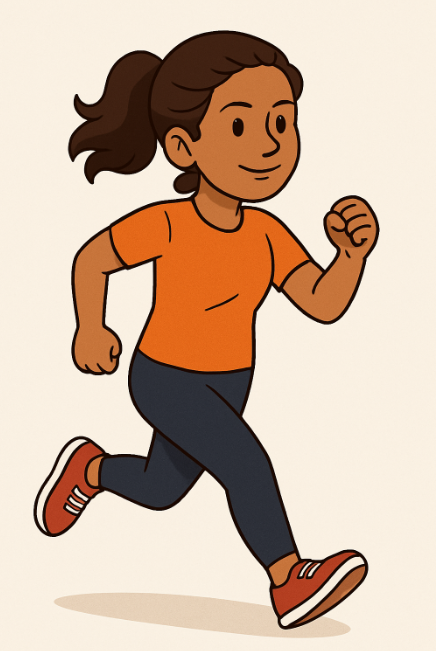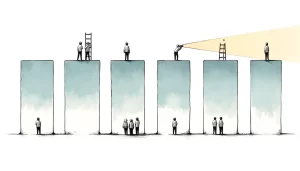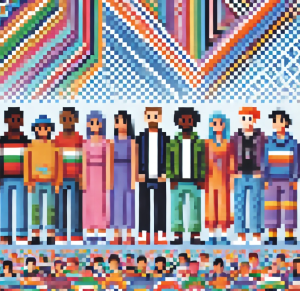
What This Study Reveals About COVID Recovery and Running
I’ve been injured since 2015, so I don’t get as many miles as I’d like. But new research shows deeper inequities.
Not All Runners Cross the Same Finish Line:
Picture the finish line at the 2023 Medellín Marathon. Thousands of runners cross, some jubilant, others exhausted. But behind the medals and cheers lies a hidden reality: not all participants had the same journey back to running after COVID-19. For some, recovery was smooth. For others—especially older runners, retirees, or those from smaller towns—the road was much harder.
This new research offers a crucial lesson: recovery from COVID-19 is not a one-size-fits-all process, even among individuals who are physically active and motivated enough to run a marathon.
Why This Matters Now
COVID-19 reshaped public health worldwide. For athletes and community members, it interrupted training, isolated people from their networks, and left lingering health questions. In Colombia, where sports infrastructure and access to safe spaces are uneven, the pandemic hit especially hard
Mass events like marathons aren’t just about sport—they’re community gatherings, economic drivers, and sources of resilience. Understanding who recovers well and who doesn’t matters for health departments, local governments, and nonprofits planning equitable public health strategies.
The Study in Brief
Researchers surveyed 2,488 participants in the 2023 Medellín Marathon. They asked about:
- Past COVID-19 infection and recovery
- Respiratory or physical limitations
- Fears about group exercise
- Training and its perceived role in recovery
The findings were clear: sociodemographic factors—such as age, education, employment status, and the runners’ origins—shaped their recovery experiences.
Key Findings
1. Age and Employment Matter
- Runners over 46 and retirees reported more frequent infections, greater fears about group running, and slower recovery.
- Younger and middle-aged runners reported feeling more fully recovered and less anxious about crowds.
Practice insight: Public health campaigns must consider that older adults—even active ones—carry higher recovery burdens. Tailored support, like modified training plans or targeted mental health outreach, can help.
2. Education Protects
- Runners with university degrees had lower infection rates and faster recovery than those with only secondary education.
- Education likely provided better access to prevention, health literacy, and consistent training.
Practice insight: Equity-focused policies in sport and public health should invest in education-linked supports, like accessible health communication and affordable training programs, to level the field.
3. Place Shapes Recovery
- Runners from Medellín reported less fear and fewer post-COVID limitations than those from smaller municipalities or other countries.
- Those outside major urban centers often faced more barriers to training and recovery resources.
Practice insight: Geographic inequalities remain a major challenge. Municipal health offices can invest in local rehabilitation and community exercise programs to reduce these gaps.
4. The Role of Training
- About one in four runners believed training helped their recovery.
- Nearly one in three thought training protected them from reinfection.
- Still, a minority continued to face physical or emotional limitations
Practice insight: Training is not just exercise—it’s prevention and therapy. Health departments and community organizations should encourage safe, structured physical activity as part of post-COVID recovery.
The Bigger Picture
This study reinforces a crucial point: sport is a public health tool. As UNESCO has argued, events like marathons promote not only physical activity but also emotional resilience and community rebuilding.
But the findings also reveal inequities. If recovery depends on age, education, and geography, then reopening society after a pandemic risks leaving some people behind.
What’s Next for Policy and Practice
- Targeted Outreach: Older adults, retirees, and those with lower education need tailored health messages, accessible rehab, and safe ways back into group activity.
- Equity in Access: Regional disparities demand investment in smaller municipalities and underserved communities.
- Health Partnerships: Event organizers, local health departments, and sports federations can collaborate on pre-race screening, follow-up programs, and digital tools to monitor recovery.
- Prevention through Training: Promote structured physical activity as both a recovery pathway and a protective buffer against future health crises.
Barriers Ahead
- Funding: Smaller towns may lack the resources for specialized programs.
- Cultural Perceptions: Some runners may downplay symptoms or avoid rehab due to stigma.
- Systemic Gaps: Without consistent national guidance, support may remain patchy across regions.
Open Questions
- How can marathons and mass sporting events be designed to better support vulnerable participants?
- Could local health systems partner with running clubs to provide ongoing rehabilitation and monitoring?
- What policies would ensure that sport becomes a truly equitable tool for post-pandemic recovery?
Join the Conversation
Recovery after COVID-19 doesn’t look the same for everyone—just as not all runners cross the finish line at the same time. For public health professionals, policymakers, and community leaders, this study is a call to action.
What does this mean for your community?
- How could your agency apply these findings?
- What barriers might keep this from being implemented?
- Does this research challenge the way you think about prevention and equity?



